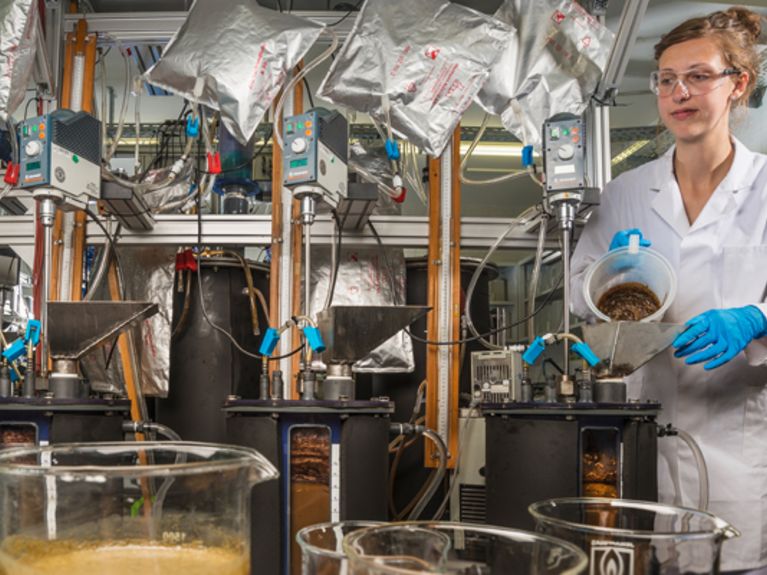HELMHOLTZ extreme
The smelliest research product

When student Clara Wunsch fills the biogas digesters with biological waste, she gets a whiff of the foul-smelling cocktail of gas. Photo: UFZ / Andre Künzelmann
If you mix a rotten egg with rancid butter, you can smell the substance which is the source of some of our sustainable energy. As soon as bacteria and archaea do their work on biological waste, it stinks like a cocktail of butyric acid, ammonia and hydrogen sulphide. The research scientists are more interested in the biomethane part, however, and its quality as a fuel.
Nobody involved in production will feel nauseous because the microorganisms work in the laboratory in sealed containers and negligible amounts can only escape when they are opened. "Sometimes it smells like there are two cows in the laboratory", said biogas laboratory supervisor Jürgen Pröter, smiling, "but it is bearable". In order to make the foul-smelling product, the research scientists of UFZ (Helmholtz Centre for environmental Research) and DBFZ (Deutsches Biomasseforschungszentrum) in Leipzig mix biosubstrates every day into the biogas plants which hold between 5 and 100 litres. Leftover food with too much protein from sausage or meat does not work so well. Nor does pure corn silage because the microorganisms need a balance rich in trace elements and with modest amounts of protein.
This is the starting point for the UFZ research scientists from the Department of Bioenergy and their colleagues from the DBFZ. They investigate what the microorganisms need in order to be able to work even more efficiently. What is the perfect mixture to get as much high-energy biogas as possible? How does the fermentation process change with the introduction of a different substrate? Pröter & Co have long since stopped limiting their research to the fermentation of familiar biowaste like slurry, corn silage and leftover food. Operators of biogas plants are increasingly asking about the fermentation properties of unusual substrates like sheep's wool or horn shavings. New in the fermentation range are olive residues, waste water from the woodworking industry, and the still untapped energy source of sugar beet. At least the variety of substances in the biogas digester means that there is a different fragrance in the laboratory every week.
Readers comments